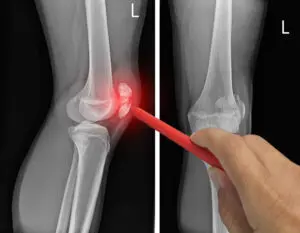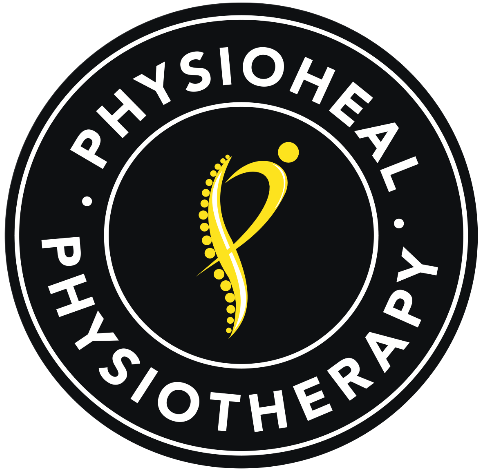We Are Open For Chondromalacia Patella Treatment in Gurgaon!
Fill the form and let us call you back.
[gravityform id="3" title="false" description="false"]
Chondromalacia Patella Treatment and Management at Physioheal Physiotherapy, Gurgaon
Chondromalacia patella – Knee Pain
Chondromalacia patella is when the cartilage on the underside of the patella (kneecap) gradually becomes softer and begins to breakdown. This can cause anterior knee pain (pain in the front of the knee). It is referred to as anterior knee pain due to the physical and biomechanical changes. The articular cartilage of the posterior surface of the patella is going though degenerative changes which manifest as a softening, swelling, fraying, and erosion of the hyaline cartilage underlying the patella and sclerosis of the underlying bone.
Chondromalacia patella generally occurs in teenagers and young adults and is more common in females than in males. The patella is a piece of bone that is positioned over the knee joint. When the knee joint is used, the patella moves over the knee joint. Chondromalacia patella occurs when the patella does not move properly and rubs against the bottom of the thigh bone. This rubbing causes the softening and breakdown of the cartilage on the underside of the patella. There can be several reasons for his to happen including:
- Biomechanical problems such as flat feet or miss-alignment of the patella
- Leg muscle problems such as imbalance, weakness or tightness
- High levels of activity that put frequent, large forces through the kneecap such as running or jumping
Stages of Chondromalacia patella
In the early stages, chondromalacia shows areas of high sensitivity on fluid sequences. This can be associated with the increased thickness of the cartilage and may also cause oedema. In the latter stages, there will be a more irregular surface with focal thinning that can expand to and expose the subchondral bone. Chondromalacia patella is graded based on the basis of arthroscopic findings, the depth of cartilage thinning and associated subchondral bone changes. Moderate to severe stages can be seen on MRI.
- Stage 1: softening and swelling of the articular cartilage due to broken vertical collagenous fibres. The cartilage is spongy on arthroscopy.
- Stage 2: blister formation in the articular cartilage due to the separation of the superficial from the deep cartilaginous layers. Cartilaginous fissures affecting less than 1,3 cm² in area with no extension to the subchondral bone.
- Stage 3: fissures ulceration, fragmentation, and fibrillation of cartilage extending to the subchondral bone but affecting less than 50% of the patellar articular surface.
- Stage 4: crater formation and eburnation of the exposed subchondral bone more than 50% of the patellar articular surface exposed, with sclerosis and erosions of the subchondral bone. Osteophyte formation also occurs at this stage.

Symptoms of Chondromalacia Patella
Chondromalacia Patella is marked by distinctive symptoms, including:
- Pain in the front of the knee, exacerbated by activities.
- Discomfort after prolonged knee bending or sitting.
- Increased pain when standing up from a chair or using stairs.
- Sensation of grinding or crepitus in the knee.
- Tenderness around the knee area.
Causes and Factors Contributing to Chondromalacia Patella
The condition is triggered by a range of factors, such as:
- Biomechanical issues like flat feet or patella misalignment.
- Leg muscle imbalances, weakness, or tightness.
- High-impact activities that exert significant forces on the kneecap, like running or jumping.
Diagnosis and Assessment
Accurate diagnosis involves a thorough assessment, encompassing various aspects:
- Observation: Typically, the joint appearance is normal, but a slight effusion may be observed.
- Mobility: Passive movements are generally full and painless, but repetitive extension from knee flexion elicits pain and a grating sensation under the patella.
- Palpation: Compressing the patella against the femur may evoke pain and crepitus. Tenderness and sensation in the patellar margins can also be detected.
- X-ray: An AP view of the patellofemoral joint helps identify radiological changes, although such changes may not be prominent in early stages.
Role of Physiotherapy in Chondromalacia Patella Treatment
Physiotherapy is a cornerstone in the management of Chondromalacia Patella, offering tailored interventions to alleviate pain and enhance knee function. Treatment approaches include:
- Muscle Stretching Exercises: Targeted stretches to address muscle imbalances and tightness.
- Muscle Strengthening Exercises: Exercises to build strength in muscles supporting the knee joint.
- Knee Taping: Application of specialized taping techniques to provide support and alleviate pain.
- Orthotics: If biomechanical issues contribute, orthotic devices can aid in correcting alignment.
- Education: Providing insights into proper exercise and movement techniques for future prevention.
Consultation and Effective Treatment
For comprehensive Chondromalacia Patella treatment, connect with Dr. Divya Gaur at Physioheal Physiotherapy Gurgaon. Our expert physiotherapists work closely with you, ensuring a successful rehabilitation journey. To book an appointment, call +91-9999259307, book online, or request a phone consultation.
